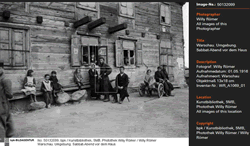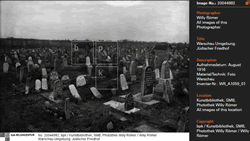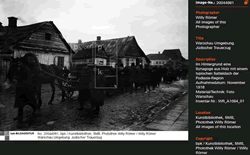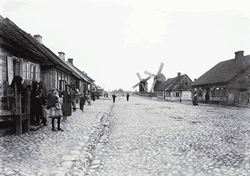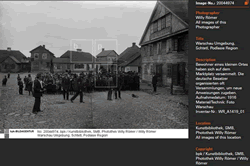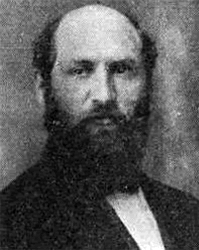From: Rozen Dov <rozendov@netvision.net.il>
My name is Hanna and former family name was LAPUK.
I was born on KREVO and brother named ARIE (LEIB)
LAPUK LEIZER and my mother FEIGE parents were born KREVO.
My parents died 6 years ago.
If possible have pictures relevant period.
I would like to know how you can add them to the list.
Rozen Dov
Robert Roudman wrote
> I am trying to find the location and modern name for Kreve, near Vilnius,
> in Lithuania.This is the only information I was able to obtain.
Hi Robert,
This is town Krevo in Belarus at 5419 2617. Prior to WWII town was located in
Oszmiany district, Vilna Province.
My wife's family, Abramsons are from Krevo, and during the Nazi occupation, my
future mother-in-law, a very young Vilna University student, was hiding in town's
vicinity following her escape from Vilna Ghetto. After obtaining false Roman
Catholic birth certificate, she managed to escape from Kreva by moving as the
volunteer laborer to Germany proper. To remain in Krevo was dangerous, as the local
Nazi collaborators, "specializing" in "discovery" Jews, would denounce her to
Gestapo. Known Polish Jewish writer Leopold Tyrmand was also in hiding in Krevo
with my mother-in-law, and he also volunteered as the laborer to move to Germany to
escape the certain death.
BTW, Krevo, this tiny sleepy town is very well known in Polish history. In this
town in 1385, Wladyslaw Jagiello, The Grand Duke of The Lithuanian Principality,
marriage with Queen of Poland, Jadwiga has signed Union of two countries, thus
establishing Poland-Lithuanian Commonwealth of The Both Nations (Rzeczypospolita
Obydwojga Narodow).
Regards,
Alexander Sharon
Another shtetl near Smorgon is Kreva. We caused quite a stir as we walked in Kreva. People in the area remember Jews being undressed and taken somewhere naked but they don’t know where. The local seamstress escaped when
the Nazis gathered the Jews but her daughter was killed.There are righteous people in this area that get a pension from Israel. Svetlana says such people in Lithuania also get a govt. pension. The Kreva Jewish cemetery is the only surviving Jewish cemetery in the Smorgon district. The Soviets destroyed the Smorgon cemetery and Nazis destroyed the Soli cemetery. Part of the Kreva cemetery is still under care.
Alternate names: Krevo [Rus], Krewo [Pol], Kreva [Yid, Bel], Kr?va
[Lith], Belarusian: ?????. Russian: ?????. 54°19' N, 26°17' E, 12
miles SSW of Smarhon (Smorgon), 16 miles ESE of Ashmyany (Oshmyany),
23 miles W of Maladzyechna (Molodechno). Prior to WWII, Krevo was
located in Oszmiany district, Vilna Province, Poland and before WWII
was part of the Russian Empire. In Krevo in 1385, Wladyslaw Jagiello,
The Grand Duke of The Lithuanian Principality married Queen of Poland
Jadwiga and signed union of two countries, thus establishing
Poland-Lithuanian Commonwealth of The Two Nations (Rzeczypospolita).
town images and links. [March 2009]
Cemetery: The week before Rosh Hashanah, I visited the cemetery in
Krewo (Kreve) located east of Oshmiany (about 15 km). The entire area
was formerly in the Oblast of Vilna. The village of Krewo is famous
for the Fortress of Krewo built in 1385 to commemorate the Unia of
Krewo (The unification of Krewo). This treaty united the Lithuanian
and the Polish People. The fortress still stands. The synagogue, which
is in reasonably good condition, is next to the fortress. The town is
also the birthplace of the Millikovsky family. Natan Millikovsky
changed his name to Netanyahu after leaving the Vlozhin Yeshiva and
immigrating to Palestine. Bibi Netanyahu is his grandson.Upon entering
the main road of the rural community past the general store, there is
a grouping of houses to the right behind which is a heavily wooded
area. The first turn is at a corner of what was known as the Lapuk
residence. Go right about one hundred yards down that road. There is a
stone wall to the right that is the beginning of the cemetery. The
cemetery itself is in a wooded area with a partial clearing that at
one time must have been much larger. Many of the stones are between
heavy vegetation overgrowth. Vandalism appears to be at a minimum.
Certain areas are well preserved, e.g. the burial site of the family
of the last chief Rabbi of Krewo.The stones that survive best are the
ones not located in the clearing between the two wooded areas. I saw
about 150 stones but it is hard to tell what actually survives because
the woods require a greater time to do a more formal survey. Among the
names we encountered were: Bodonovsky, Lapuk, Milikovsky, Perevosky,
Halevi, Hirkovitz, Cohen, Epstein, Rudnik, Schmuelisky,Berman, Delion,
Soloduka, Brudno, Palistina, Goler, Koniansky, Skop, Jakbson.
Padunober, Likovich, and Lakerman. My special thanks to Regina
Kopelovich and the family of Bella Lipkovich without whom this visit
would not have been possible. Rafael Guber
David Leyzer Meltzer from Volozhin was in the Ghetto in Krevo (one of
the last ghetto's to be liquidated).
I am posting David story ; "My name is Dovid-Leyzer Meltser and I was
born in Volozhin in 1923. Shimen Itskhok Meltser son of Zvi of
Vishnevo was my father; Sore Sheyne nee Rabinovitsh was my mother.I
was studying in the Volozhin Hebrew Tarbut School and in the Polish
Primary Povshekhna until 1939. From 1939 until 1941, during the Soviet
rule, I completed my studies in the Russian School.
The Germans occupied Volozhin in June 1941. All the Jewish inhabitants
were transferred into the Ghetto a month later. 200 Jews were gathered
at the town's Sport Stadium and executed by shooting in October 1941.
It was the first mass slaughter in Volozhin. The second massacre
occurred near the ancient graveyard on May 10, 1942, where 2000 Jews
were murdered. The last mass slaughter, the third one took place in
the Volozhinka streambed in August 1942.
Our family; my parents, brother and sister and I were driven away from
the ghetto by the Germans and their assistants; local Policemen. We
were taken into the blacksmith building that was erected during the
time of the Soviet rule. The building was located on the Dubinski
Street (now Sovietskaya)
The Aktion took place during the second Pogrom, They put us in groups
of eighty people each and transferred us group by group to the killing
field.
The killings were conducted near the Jewish Graveyard The Jews were
executed by shooting.
My father told me:
“Run, my son, perhaps you'll be the sole to survive of our family”.
I put myself on his shoulders, removed some tiles from the roof and ran away.
One other person was able to jump and run away after me, It was Ele
Mlot. I spent some days in forest, than returned to the Volozhin
Ghetto where I hid in a nook.
I found out that my parents, my sister and brother were executed on
May 10, 1942.
I ran back into forest after the third slaughter, then I was able to
transfer to the shtetl Krevo, where a ghetto still existed. From Krevo
I went to Smorgon and from there they transferred us to Lithuania and
imprisoned in the Zhensistoria concentration camp.
They brought a group of us into Vilnius in December 1942, where we
were ordered to build a commercial rail station.
Once in the evening, returning from work, I ran away into a nearby
forest. I wandered there for some days until I met with Russian
Partisans. I joined the Bagration group of the Voroshilov Brigade. I
was with the partisans until the liberation of Belarus and Lithuania.
After liberation I joined the Red Army. On Victory Day I was in
Magdenburgh, Germany.
I was released from the army and returned to Volozhin in December 1945
and went to work. I married Sofiya (Sonia) Milikovski, daughter of
Leyzer Itskhok and Hana born Berman from Horodok.
Our marriage took place in Volozhin in 1947. Our daughter Hasia was
born in 1950. She was ill and passed away at age 31 to our great
sorrow in the year 1981.
Our son Shimon was born in Volozhin on 1954. We made Aliya to Israel
in the 1990s, the entire family, my wife, my son Shimon, his wife
Polina, his children Asia and Yakov and I where we now live."
David' story is translated from Russian by M. Porat--
From: Rozen Dov <rozendov@netvision.net.il>
My name is Hanna and former family name was LAPUK.
I was born on KREVO and brother named ARIE (LEIB)
LAPUK LEIZER and my mother FEIGE parents were born KREVO.
My parents died 6 years ago.
If possible have pictures relevant period.
I would like to know how you can add them to the list.
Rozen Dov
rozendov@netvision.net.il
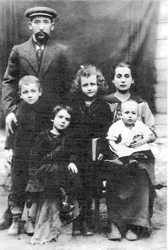
Please be advised that the description underneath Krevo – 1a photo needs to be amended as follows:
The names of my grandparents are correct. However, the names of the children in the photo should be: standing next to her mom holding a book is Libby, later to become Mrs. Wasser, next to her are her brother Yitzchak and sister Channa. The baby on my grandmother's laps is my mom Shara later to become Mrs. Forschner.
I am the one who tried to send this photo to Yad Vashem after I had received it from my aunt Libby. My mother never saw this photo as it was sent by a distant relative to my aunt Libby on 2005 and my mother died on Y2000. That relative discovered some photos in a box and didn't recognize any of the people. She asked my aunt Libby if she knows who those people were and my aunt almost fainted as she didn't have any childhood/family photos of the times before the war.
So that's the story behind the photo and I will appreciate if you could amend the description as per the above.
Thanking you in advance.
Chaya Werber
From: Esther Epstein <estherwasser@.com>
My name is Esther Wasser Epstein. My mother, Luba Persky née Abramson was born in Krewo in 1920 and passed away last year. She gave me the picture of the Persky family pictured on your website that my cousin Chaya Werber posted?
My mother (Libby Wasser, holding a book) was finally able to share her story with me at length a few years before she died. Her story was heart wrenching, and even now it is hard for me to share her story. I noticed that on your Krewo website, picture 26 mentions Gershon Milikovsky and his daughter Roza ( or Raizala) and her brother Noah. My mother said that Gershon and Judah Milikovsky were uncles and business partners with her father, Chaim Yehudah, and Roza was her cousin and best friend. She described how Noah perished. Could you possibly put me in touch with the person who wrote the caption to this picture? Thank you for any help you could provide.
Sincerely,
Esther Epstein
------------------------------I (Eilat Gordin Levitan) wrote the caption. A building owned by Ger
shn Yudl Milikowski being reconstructed with the help of the AJDC (American Jewish Joint Distribution Committee). Owner Gershon Milikowski was born in Krewo c1887 He was a merchant and
married to Lea and had two children ( Roza, born c 1917 and Noach born
c 1912) Prior to WWII he lived in Krewo, Poland. During the war he was in Wilno, Poland. Gershon and his family were murdered in Wilno
Ghetto.
I searched the yad vashem sire for the information.
Lily Bogash Kohn fergiecat@msn.com <litvaksig@lyris.jewishgen.org>
I am new to research in this area. I am seeking vital records and/or
census records for a couple families from Krevo circa 1875-1900.
I contacted LVIA and was advised to contact the State Archives of
Republic of Belarus who referred me back to LVIA. I would welcome
any suggestions.
Thank you in advance.
Lily Kohn
Researching SKOP, MILIKOWSKY, BODINOFSKY
MODERATOR'S NOTE: Krevo is part of LitvakSIG's Oshmiany District
Research Group, which has already translated the revision list/
census records for 1834, 1850, 1858 and 1858-1905, and is in the
process of translating the records for 1816. You can search the
All Lithuania Database for your surnames of interest at
https://www.litvaksig.org/all-lithuania-database/search-ald/
and you should find results from the 1834, 1858, and 1858-1905 lists.
The 1850 list, and 1818 list, when translated, will initially be
accessible only to qualified contributors to the Research Group. To
find out more about the Research Group or other Krevo records,
write Coordinator Judy Baston at jrbaston@aol.com
From: <eepstein257@aol.com>
Date: Wed, Feb 1, 2017 at 12:26 PM
Subject: Luba Persky
To: egl.comments@gmail.com
I would please like to ask you to explain the number 89 on my mother's Yad Vashem entry for her address in Krevo, Belarus. Is that a house number? I am planning on visiting Krevo this summer and am having difficulty finding that address, or if it is an address. Could it be a road? u, Jan 1, 2015 11:05 pm
Holocaust Survivors and Victims Database -- Liba Perska
http://www.ushmm.org/online/ hsv/person_view.php?PersonId= 4583897
Thank you so much for any information you can provide.
Esther Wasser Epstein daughter of Luba Persky nee Abramson
From: <ATTYMIR@aol.com>
Sirs,
My mother was Miriam Kaminski. Upon her first marriage she became Miriam Gumnitz. Upon her second marriage she became Miriam Raub.
My mother's family was from Krevo. My mother was a concentration camp survivor.
The following is a link to my mother's diary in a google doc format:
https://docs.google.com/document/d/1tPTR3jogxXIzddQJBSmkLkTJ_QxYpBFKKbCNhixD0xo/edit
From: Esther Epstein <estherwasser@me.com>
Date: Fri, Jun 9, 2017 at 1:48 PM
Subject: Alexander Sharon / Krevo
To: egl.comments@gmail.com
I noticed an excerpt from Alexander Sharon stating his wife's family are Abramson from Krevo. My grandmother was an Abramson and my mother was born and lived in Krevo. Could you contact me? Eepstein257@aol.com
BTW I am visiting Krevo on June 16.
Thank you,
Esther Epstein
Dear Sir/Madam,
I am working on project conected to Shtetls in SMORGON area
There are pictures made by German soldier Willy Romer during IWW
He stationed probably in Kreva (they are pictures from Lida)
We want to prepare exhibition these pictures with collaboration Goethe Institute.
However most of the pictures have wrong description and we need help with identification.
I would be garteful for any tips
Kind regards
Marcin Guzek
Nathan Milikowsky was born to Zvi in Krevo ( Vilna area)near Oshmana.
in 1875. a descendant of the Gaon from Vilna. He studied at the
Volozhin Yeshiva for 8 years and then became an orator preaching about
Zionism. He migrated (with his children who were born in Warsaw) to
Palestine in 1920 and served as headmaster of various Hebrew high
schools in several towns before settling in Jerusalem as an official
of the World Zionist Organization. On his arrival in Palestine,
Milikovsky changed the family name to Netanyahu ("Lord has given"). He
was from the beginning a supporter of right-wing views in the Zionist
movement, a tendency which deepened in the next generations of his
closely knit family. He passed away in 1935.

